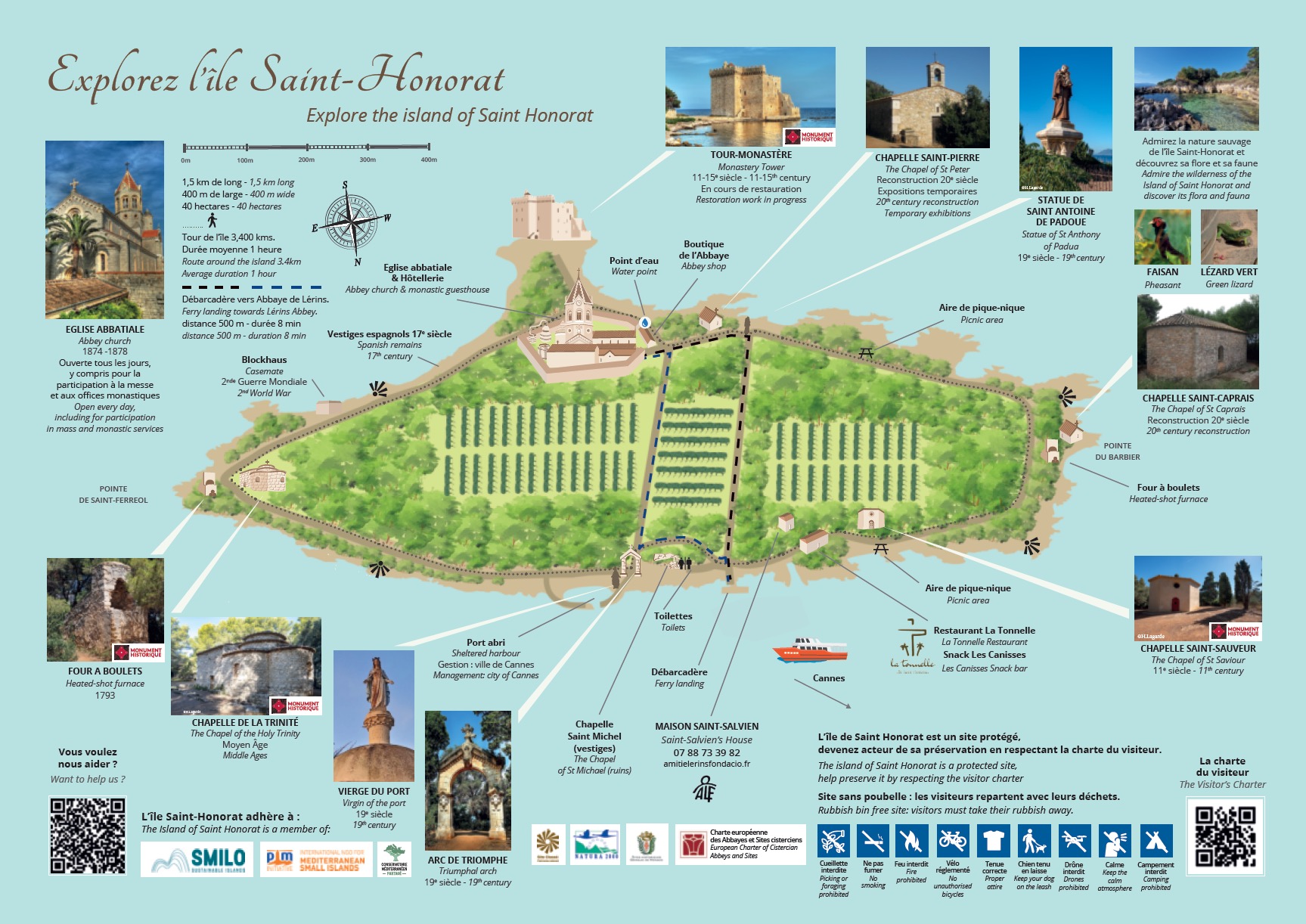The island of Saint Honorat
The island of Saint-Honorat: a spiritual and historic setting
The island of Saint-Honorat has been home to a monastic community for 16 centuries. This long tradition has made it a unique cultural, natural and spiritual site.
Ile Saint-Honorat is 1.5 km long and 400 m wide, including 8.5 ha of vineyards. It belongs to the Congregation of the Cistercians of the Immaculate Conception. The island is home to a monumental complex comprising a 19th-century abbey with a 12th-13th-century medieval cloister, a monastery tower and six chapels. There are also two cannonball ovens dating back to 1793.
Stretching 1.5 km long and 400 m wide, the island is the jewel in the crown of the Congregation of the Cistercians of the Immaculate Conception. Its 8.5 hectares of vineyards stand alongside a remarkable architectural heritage: a 19th-century abbey, a medieval cloister dating from the 12th and 13th centuries, a monastery tower and six chapels. There are also two cannonball ovens dating back to 1793, bearing witness to a rich historical past.

An island steeped in history and faith
At the beginning of the 5th century, Saint Honorat settled on the island with a group of companions, and by the end of the 6th century it had been described as a holy island. To this day, the island's natural and monumental landscape resembles that of a sanctuary, giving an idea of its long spiritual history.
A remarkable architectural heritage
The ancient buildings still preserved on the island bear witness to the importance and influence of the abbey and are still partly the setting for the monks' community life today. The monastery tower, listed as one of France's first historic monuments by Prosper Mérimée in 1840, was built between the 11th and 12th centuries.e and the XVe This tower-refuge gradually became a real monastery, with a two-storey cloister, interior chapels and cells for the monks. This tower-refuge gradually became a real monastery, with a two-storey cloister, interior chapels and cells for the monks.
The rebirth of the monastery
After a period of disuse at the end of the XVIIIe and in the first half of the XIXe In 1869, the island welcomed a Cistercian community from Sénanque Abbey (Vaucluse). The monks' move was accompanied by a vast monumental project designed by Cannes architect Laurent Vianay.
A living community in the heart of a sacred landscape
Even today, the island of Saint-Honorat is one of the oldest examples of island monasticism in the West. Far from limiting itself to its role as guardian of a thousand-year-old heritage, it remains a place of prayer, work and welcome. Come and discover this haven of peace where spirituality and history blend harmoniously.
